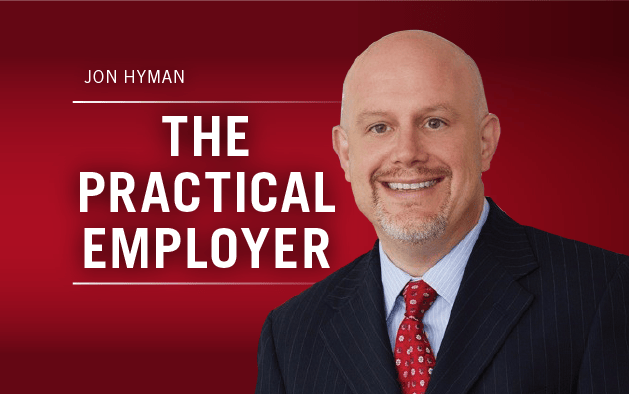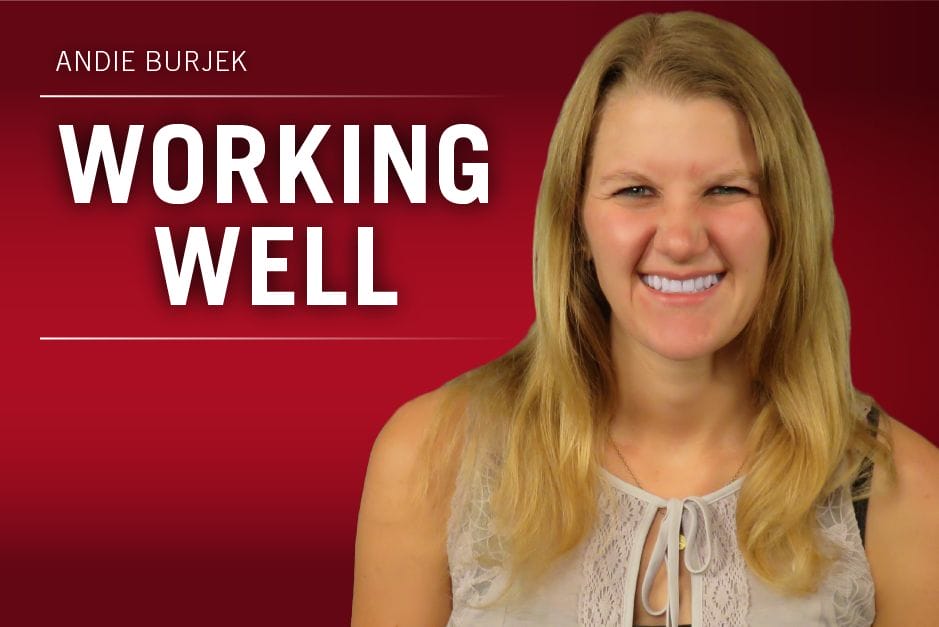
Per aspera ad astra is a Latin phrase that translates, “through hardships to the stars.”
The phrase serves as a reminder that progress is not always a straight-ahead path. Often there are forks in the road and winding turns that can hinder the journey. How one navigates those obstacles is the essence of one’s character. The same applies for companies as they strive for HR excellence. For many companies, the journey comes with a fair share of challenges, successes and lessons learned.
Workforce has recognized 100 companies for the past six years that have excelled in people management with the annual Workforce 100 list of best HR practices. Workforce editors and researchers initially partnered with employee review site Glassdoor in 2016 to get an internal perspective of employee satisfaction with their company. Before the partnership with Glassdoor the Workforce 100 list leaned in favor of large corporations and did not take into account the thoughts and responses of rank-and-file employees. Since the partnership began, the list has evolved to include smaller organizations and reveals the value of a strong employer-employee relationship. A company’s score is calculated using Human Capital Media’s Research and Advisory Group and Glassdoor rankings. The inclusion of Glassdoor to the methodology seemingly plays a role in the rise and fall of company rankings.
Over the past six years certain trends have become apparent. Some companies are consistently strong. Johnson & Johnson (No. 11), Salesforce.com (No. 18) and AT&T (No. 45) have appeared all six years. There have been one-hit wonder companies such as Netflix, appearing last year; and the Hershey Co., which only appeared in 2015. Other companies scored high in the first few years and have since fallen in the rankings. One example is McDonald’s, which scored third in 2014, then No. 17 in 2015 before dropping to No. 94 in 2016. Since then, the Golden Arches has not appeared on the Workforce 100.
While some, like McDonald’s, have tumbled down the ranks over the years, there have been companies that ascended to the top. One such company is Southwest Airlines. The Dallas-based airline first appeared on the Workforce 100 in 2015, ranking No. 48. The following year, the airline dropped two places to No. 50. Then from 2017 to 2018, Southwest rose from No. 17 to No. 11.
This year, Southwest ranks No. 1.
The Employee Experience
Julie Weber, vice president and chief people officer at Southwest Airlines, has approached human resources with an employee-first outlook. Weber serves more than 58,000 employees, ensuring that they have a fulfilling experience during their employment with Southwest.
“We’ve really put our employees first since the beginning with our founder, Herb Kelleher,” Weber said of the airline’s late iconic leader. “Our belief is that happy employees make for happy customers, which make for happy shareholders.”
One way that Southwest stands out lies within its centralized hiring practices. Companies in the retail or restaurant industries might look for seasonal employees but Southwest aims for the long haul with its hires. During the recruitment process, Southwest puts an emphasis on matching candidates to the company by attitude and culture fit.
“We look for entry-level employees who are highly motivated to work with us,” Weber said. Southwest’s continuous emphasis on employees, including their treatment before employment, has resulted in lower turnover rates.
Southwest also promotes a fun, engaging work environment for employees, including companywide Halloween parties. Employees are encouraged to wear their best costumes to work and to bring family members along for trick-or-treating around the office. Company leaders also host meals with employees going through leadership development programs.
“Though we have a highly engaged workforce now, it is ours to lose if we don’t maintain a focus on evolving the employee experience,” Weber said.
As companies grow, so do the needs of employees. Maintaining a positive employee experience can take extra effort. With a company as large as Southwest that spans across the country, evolving the employee experience means adapting to technologically advanced platforms. Under Weber’s guidance, Southwest has initiated an HR transformation in order to adapt its practices. One of the initial aspects of this transformation includes widening the scope of the talent-acquisition base to focus on the candidate of the future.

“We started with investing in tools that help us with talent acquisition and now we are really looking at the entire employee experience,” Weber said. Her goal with this process is to enhance Southwest’s ability to attract and connect with newer generations of candidates.
This transformation will also involve updating the company’s HR operating model so that employees will be able to access a one-stop shop. Weber wants to ensure that employees can easily access the HR services available to them, even from their phones.
“It’s a big undertaking. It will include investing in new technologies with a whole focus on improving the employee experience.”
While this transformation has been overall positive for the company, with change comes challenges. Part of Southwest’s journey toward transforming its HR operating model has been to keep their leaders and employee population enthused. Weber’s solution has been to maintain strong communication of the company’s vision and initiatives. Company alignment and visible leadership has ensured that these changes go beyond just the people department.
“We want to make sure that we are bringing people along with the journey and involving our HR professionals [and stakeholders] with these decisions. That way, we all own this transformation.”
Adapting to Change
T-Mobile is another company that has shown a consistent upward trajectory since debuting on the Workforce 100 in 2016 at No. 72. This year, T-Mobile climbed to 2nd. The telecommunications company is based in Bellevue, Washington, and counts more than 52,000 employees across the nation. Liz McAuliffe, executive vice president of human resources, believes that T-Mobile’s overall success starts with the employee.
“What really sets HR apart at T-Mobile is our core purpose. We are stewards of all T-Mobile employees in their personal growth and career success,” McAuliffe said. T-Mobile’s grass-roots approach to the company’s success relies on creating a culture that inspires its people to not only feel good about themselves but to reflect that goodness in others.
“We approach everything with this mindset,” McAuliffe said. “It’s a game-changer.”
Over the past five years, T-Mobile has evolved its HR operating model in order to meet and exceed the needs of a diverse employee population. To start, they’ve launched an ongoing effort to create a diverse and inclusive environment that will celebrate their employees’ unique selves.
This investment began in 2014 when T-Mobile launched diversity and inclusion networks nationwide. Today, the membership of those networks across the nation’s 50 chapters makes up approximately 42 percent of the company’s employee base. To further develop a diverse and inclusive workplace, T-Mobile initiated a companywide learning project called Insight Out. The program involves a combination of in-person and digital interactions to bring awareness to bias in order to create a foundation for more inclusive language, actions and behaviors.
“This isn’t easy,” McAuliffe said. “It requires courage, awareness, open-mindedness and commitment, but acting on this complex challenge reflects who we are at T-Mobile.”
LiveMagenta is another initiative that aims to transform the traditional face of T-Mobile’s employee assistance program. LiveMagenta would ensure that employees can access resources and benefits through a mobile-friendly app. “LiveMagenta [is] providing everything from financial experts to counseling services and life coaches,” McAuliffe explained.
While McAuliffe reports an overwhelmingly positive response to these initiatives, the company has also experienced the growing pains that come with change. “One challenge is delivering meaningful services that scale for 52,000 employees while still meeting the needs of employees at all levels and in widely varying roles,” McAuliffe said. Another challenge comes with operating an HR team at the same fast pace as the business itself.
McAuliffe said the solution for T-Mobile was found through a strong collaborative relationship with their business partners coupled with an efficient HR team. Listening to employee feedback has revealed how just how much these initiatives have improved things for the better. “[It] never ceases to amaze me,” McAuliffe said. “It’s truly magical when people can come together and deliver such fantastic results every single day.”
Recognizing Diversity and Inclusion
Goldman Sachs has also risen through the Workforce 100 rankings the past six years. Their trajectory began when they first appeared on the list in 2015 at No. 27. This year the company clocked in at No. 3.
For the investment banking company, the advancement of women and a diverse workplace has not just been a nice to-do. It’s been a business priority. Goldman Sachs’ Vice President, Media Relations Leslie Shribman offered insight to the company’s key HR initiatives in recent years. As a commitment to this advancement, the company announced last year that they aspire to have women make up 50 percent of their diverse talent worldwide, and 50 percent of all analyst hires by 2021. “We have invested in new programming to attract more women applicants to positions at the firm and have instilled accountability measures within our hiring process to review progress against our goal,” Shribman said.
The company also has demonstrated an inclusive atmosphere by implementing programs that focus on working parents. One example is LifeCare’s Milkship program for employees who are breastfeeding. This program offers a free full-service program for employees in the United States to safely ship their breast milk home when they travel overnight for business. Other programs include providing parental leave following the birth or adoption of a child, access to best parenting practices, and medical guidance should a critical situation arise.
Goldman Sachs has also made advancements in their programs to reinforce an inclusive environment. Three of these programs include their Women’s Career Strategies Initiative, Black Analyst and Associate Initiative, and Hispanic and Latino Analyst Initiative. The programs work to ensure a supportive environment by focusing on the networking and development opportunities for women and minority employees. “We believe our people are our greatest asset. We invest in their development and provide them an opportunity to work alongside talented colleagues to drive progress across markets, communities and the world,” Shribman said.
These programs are not laurels that Goldman Sachs wishes to rest upon. They have recognized that progress is an ongoing process. As the workforce changes, so must the HR teams that serve it. “We regularly evaluate how we can improve our programs, offerings and policies to best support employees,” Shribman said. “We are committed to continuing to provide our employees with the environment, resources and experiences that meet their needs and help them realize their potential.”
Benchmarking Excellence
Except for 2016 when they dipped to No. 14, Deloitte has held a consistent position in the top 10 on the Workforce 100. Based in New York, the professional services company counts 286,000 employees worldwide. Over the past five years, the company has continuously reshaped its HR operating model to keep up with an evolving workplace and workforce. Their focus has been channeled into modernizing their performance experience, promoting a culture of flexibility and well-being, and attracting, advancing and retaining women.
Global Chief Talent Officer Michele Parmelee spoke to the challenges that have come along with maintaining consistent progress of these initiatives. “Achieving gender parity at each level of the organization is challenging for even the most progressive,” she said. “We are leaving no stone unturned.”
As a company that serves employees across many different geographies and cultures, Deloitte has embraced the uniqueness of its workforce. The connection the company has to its diverse employee population comes with an environment that encourages authenticity. Thus, Deloitte’s main focus for employee experience has been to support its people in creating their own unique talent experience. “We want to create meaningful opportunities for each person to make an impact, grow, learn and lead at every point in their career,” Parmelee said.
According to employee review site Glassdoor, Deloitte employees have noted that one of the most positive aspects of working with the company has been its work-life balance, which reflects Deloitte’s commitment to a culture of flexibility. “Deloitte places trust in people to decide when, where and how best to work,” Parmelee said. For instance, Deloitte’s unit in the United Kingdom offers a Work Agility program that combines formal and informal work arrangements to support a flexible schedule. Within the United States, Deloitte has expanded its fully paid family-leave policy to offer up to 16 weeks.
“Wellness is also a major focus as we find it helps to build a sense of community and a sense of belonging,” Parmelee added. Their programs in Canada reflect this focus, where wellness centers deliver well-being services onsite to Deloitte offices in major metropolitan areas. These services include therapeutic treatments, team-building activities, and onsite quite space.
“Effecting real change is not only a mindset but requires a daily commitment and deliberate action,” Parmelee said.
















 Third, the literature on engagement usually describes three states of engagement: engaged, disengaged, and actively disengaged. This three-part description lacks a positive upper range of active engagement — distinguished by the concept of employee work passion,
Third, the literature on engagement usually describes three states of engagement: engaged, disengaged, and actively disengaged. This three-part description lacks a positive upper range of active engagement — distinguished by the concept of employee work passion, 